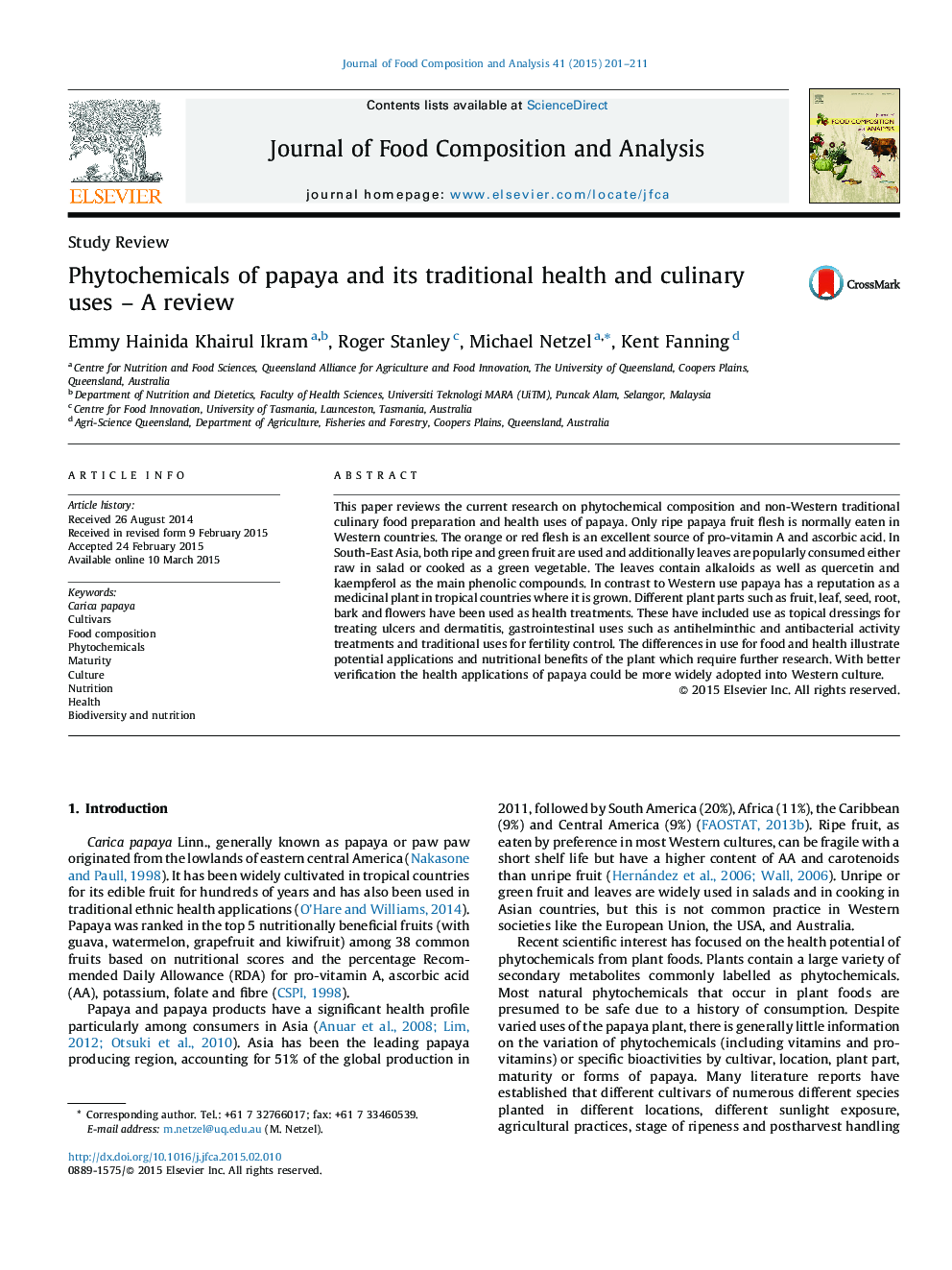| Article ID | Journal | Published Year | Pages | File Type |
|---|---|---|---|---|
| 1218233 | Journal of Food Composition and Analysis | 2015 | 11 Pages |
•Review on phytochemical composition of papaya pulp, leaves, peel and seeds.•Cultivar and maturity influence the nutrient and phytochemical composition.•Non-Western traditional uses and culinary food preparation of papaya.•Nutritional potential of papaya leaves.•Potential to be more widely adopted into Western culture.
This paper reviews the current research on phytochemical composition and non-Western traditional culinary food preparation and health uses of papaya. Only ripe papaya fruit flesh is normally eaten in Western countries. The orange or red flesh is an excellent source of pro-vitamin A and ascorbic acid. In South-East Asia, both ripe and green fruit are used and additionally leaves are popularly consumed either raw in salad or cooked as a green vegetable. The leaves contain alkaloids as well as quercetin and kaempferol as the main phenolic compounds. In contrast to Western use papaya has a reputation as a medicinal plant in tropical countries where it is grown. Different plant parts such as fruit, leaf, seed, root, bark and flowers have been used as health treatments. These have included use as topical dressings for treating ulcers and dermatitis, gastrointestinal uses such as antihelminthic and antibacterial activity treatments and traditional uses for fertility control. The differences in use for food and health illustrate potential applications and nutritional benefits of the plant which require further research. With better verification the health applications of papaya could be more widely adopted into Western culture.
